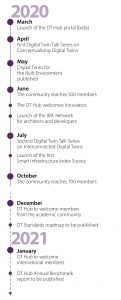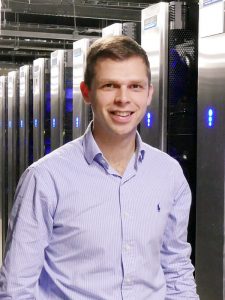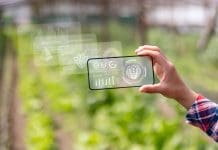The Centre for Digital Built Britain’s Digital Twin Hub (DT Hub) has signed up more than 700 members since it was launched in March. Find out more about this exciting, fast-growing community and how it can help you to accelerate your digital twin strategy
It has been just three years since the National Infrastructure Commission first recommended the development of the National Digital Twin in its ‘Data for the Public Good‘ report and momentum behind the idea has been building steadily ever since
No longer is a National Digital Twin merely an ambitious concept. It has now grown into a viable goal, with a rapidly growing number of organisations recognising the benefits of being part of an ecosystem of connected digital twins, securely sharing information. Here, at the Centre for Digital Built Britain (CDBB), we’ve had a front seat on this journey through our National Digital Twin programme (NDTp).
A digital twin support network
Even in the early days of the NDTp, it was clear that the people who were leading the thinking and the practice of digital twinning would benefit from being connected. So, on 31 March this year, we launched the DT Hub to create a community and start the conversation.
Essentially, the DT Hub is a web-enabled community to foster communication, connections and collaboration between digital twin practitioners within the built environment. The focus has been on the digital twin owners, both actual and potential, and on the suppliers of relevant products and services, but other key contributors, such as academics, will be very welcome too.
Over the last six months, the DT Hub has become the beating heart of the National Digital Twin programme. It is based on the understanding that no one organisation has all the answers and it’s only through a safe community openly sharing lessons learned, good practice, common principles and ideas that real progress can be made.
Members were quick to recognise these benefits and by June we had reached 500 members.
Our members are made up of people and organisations interested in developing digital twins across the built environment: asset owner/operators, local authorities, architects, engineering consultants, construction companies, software developers, AI companies, big tech and more.
All of them interested in developing digital twins and in the potential to connect digital twins through secure, resilient data sharing.
One founder member, Matt Edwards, chief data officer at Anglian Water, shared with us why they were so keen to get involved: “As an organisation, targeting a step-change in digital capability through digital twins, the opportunity to connect with both like-minded organisations and experienced leading innovators in the field who can guide our roadmaps and progress, is not only beneficial but essential.
“The resources are excellent in quality, engaging for our people and allow them to learn and develop their knowledge, all while giving them confidence in sharing their own advancements.
“Having the foundation of CDBB resources within easy access is critical to national infrastructure staying on the path to a connected digital future through data.”
The lively and growing community provides a space for conversation with varied online and offline discussions based around common themes, as well as regular webinars, workshops and other events to explore topics in more depth.
In April, we began our first Digital Twin Talk Series on Conceptualising Digital Twins, followed by a second series in July on Interconnected Digital Twins. Both series included a chance for our members to input and discuss with the panel how current thinking is being realised in their own organisations.
Steven Zhang, from Modular Geospatial Data for Everyone, said the talks “have played a very important role for my personal development, and [a great opportunity] for me to better connect with leading experts, who are working towards the same ambitious goal.”
Finding common ground

We plan to take a pragmatic approach, “learn by doing and progress by sharing” – including what works well and lessons learned from early pilots and projects. This can then feed into an evolving view of what good looks like and inform the need for future standards.
We want our DT Hub members to join in and be an active part of this process and believe that they all play a key role in co-developing a guide to what a digital twin is and how we can best harness its value to improve and change the built environment. A benefit of joining early is that you can be a part of this pioneering group, together establishing an exciting transformation of our digital world.
As part of this process, we launched the Information Management Framework Community, which will play a pivotal role in shaping the underpinning framework that will support the subsequent development and integration of emergent digital twins into a connected ecosystem.
It’s a particularly important milestone as it supports future thinking on the global standards architecture for digital twins. Again, we encourage our members to engage in the process – it is still an evolving area and, as such, there are some areas that require industry validation. We’re inviting DT Hub members to interrogate the findings and further develop the roadmap in a workshop on 3 December. Please REGISTER your place to receive details for how to take part.
The Gemini Programme has also been established, which aims to develop resources for the DT Hub community and expand the outreach of the Information Management Framework and of the programme itself. The Gemini Programme brings together people and organisations willing to contribute time and resources to develop materials for use by the DT Hub community.
Samuel Chorlton, chair of the DT Hub, said: “Although our physical worlds have felt much smaller and more constrained this year, I am encouraged that the digital world has been able to transcend some of these limitations and provide a refuge in such challenging times.
“To allow the UK to continue to grow and thrive in years to come, it is going to need to be able to harness the digital more fully than ever before. Harnessing the potential of digital twins and the digital world will need the support and involvement of as many people as possible. We look forward to seeing you in the DT Hub soon.”

How can you get involved?
We want to bring everyone on the digital twin journey with us and we would love to encourage more of you to join the conversation. We’re grateful for all the input we’ve had so far, whether it’s been a quick, “yes, I agree this works” or a more in-depth response.
We are building membership in phases and in December, we plan to welcome members from the academic community and early next year we will open the DT Hub to international members.
If you are interested in joining please go to digitaltwinhub.co.uk.
What does the future hold?
As we approach the end of the year, we’re really excited to publish our Digital Twin Standards roadmap. It provides a very practical and comprehensive summary of the current standardisation landscape for digital twins in the built environment and includes national, European and global standards. It’s intended to guide all stakeholders from asset owners to users, by signposting relevant standards, including BSI (British Standards Institution) documents, so everyone can be aware of current good practice.
 Samuel Chorlton
Samuel Chorlton
Chair
Twitter: @CambridgeCDBB
LinkedIn: Centre for Digital Built Britain

















